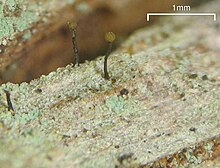
The Leotiomycetes are a class of ascomycete fungi. Many of them cause serious plant diseases.
Scutula is a genus of lichenicolous fungi in the family Ramalinaceae.
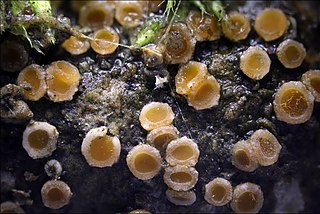
Gyalectales is an order of lichen-forming fungi in the class Lecanoromycetes. It contains 5 families, 15 genera and about 550 species.
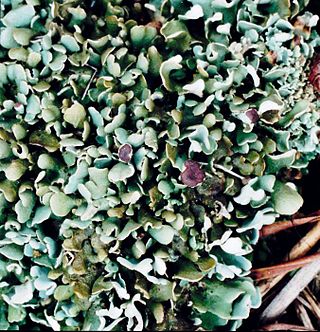
Lecanoromycetes is the largest class of lichenized fungi. It belongs to the subphylum Pezizomycotina in the phylum Ascomycota. The asci of the Lecanoromycetes most often release spores by rostrate dehiscence.

The Arthoniales is the second largest order of mainly crustose lichens, but fruticose lichens are present as well. The order contains around 1500 species, while the largest order with lichenized fungi, the Lecanorales, contains more than 14000 species.

The Arthoniaceae are a family of lichenized, lichenicolous and saprobic fungi in the order Arthoniales. The Arthoniaceae is the largest family of Arthoniales, with around 800 species. Most species in Arthoniaceae belong in Arthonia which is the largest genus with 500 species. The second and third largest genus is Arthothelium with 80 species, and Cryptothecia with 60 species.

The Pannariaceae are a family of lichens in the order Peltigerales. Species from this family have a widespread distribution, but are especially prevalent in southern temperate regions.

The Collemataceae are a lichenized family of fungi in the order Peltigerales. The family contains ten genera and about 325 species. The family has a widespread distribution.

The Sphaerophoraceae are a family of lichenized fungi in the order Lecanorales. Species of this family have a widespread distribution, especially in southern temperate regions. Sphaerophoraceae was circumscribed by mycologist Elias Magnus Fries in 1831.
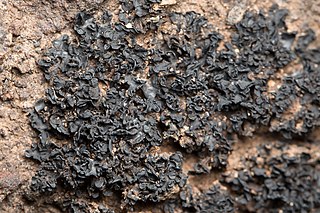
The Lichinaceae are a family of ascomycete fungi. Most species are lichenized with cyanobacteria, and have a distribution largely in temperate regions.

The Baeomycetales are an order of mostly lichen-forming fungi in the subclass Ostropomycetidae, in the class Lecanoromycetes. It contains 8 families, 33 genera and about 170 species. As a result of molecular phylogenetics research published in the late 2010s, several orders were folded into the Baeomycetales, resulting in a substantial increase in the number of taxa.

The Mycocaliciaceae are a family of seven genera and about 90 species of fungi in the order Mycocaliciales.
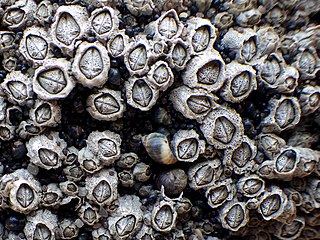
Xanthopyreniaceae is a family of lichen-forming fungi in the order Collemopsidiales. The family was circumscribed by lichenologist Alexander Zahlbruckner in 1926.
Lichinodium is a genus of filamentous lichens. It is the only genus in the family Lichinodiaceae, itself the only member of the order Lichinodiales. Lichinodium has four species. Previously considered part of the class Lichinomycetes, molecular phylogenetic analysis revealed that Lichinodium represents a unique lineage in the Leotiomycetes—the first known group of lichen-forming fungi in this class.
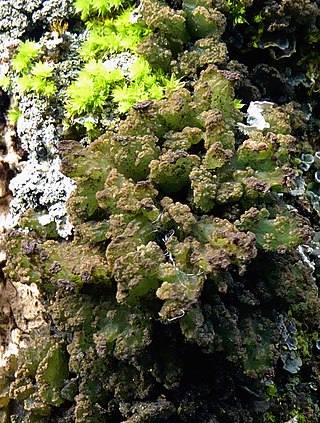
The Arctomiaceae are a family of lichenized fungi in the Ascomycota, class Baeomycetales. The family was named by Theodor Magnus Fries in 1861, with Arctomia as the type genus. Species in this family are found in arctic and subarctic habitats, usually associated with bryophytes.

The Caliciaceae are a family of mostly lichen-forming fungi belonging to the class Lecanoromycetes in the division Ascomycota. Although the family has had its classification changed several times throughout its taxonomic history, the use of modern molecular phylogenetic methods have helped to establish its current placement in the order Caliciales. Caliciaceae contains 39 genera and about 670 species. The largest genus is Buellia, with around 300 species; there are more than a dozen genera that contain only a single species.

Bunodophoron is a genus of lichen-forming fungi in the family Sphaerophoraceae.

Trapeliaceae is a family of lichens in the order Baeomycetales. The family contains 12 genera and about 125 species.
Pseudothelomma is a genus of crustose pin lichens in the family Caliciaceae. It currently contains two species. The genus was circumscribed in 2016 by lichenologists Maria Prieto and Mats Wedin. The generic name Pseudothelomma refers to its resemblance to genus Thelomma, where the two species used to be classified. Both species grow on dry exposed wood, particularly fence posts.
Calycidium is a genus of lichen-forming fungi in the family Sphaerophoraceae. It has two species. It is one of the few lichen genera containing foliose (leafy) species that produce a mazaedium – a powdery mass of spores. Both species occur in Australasia and South America, where they grow on tree bark or on mosses.
